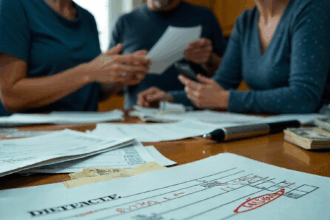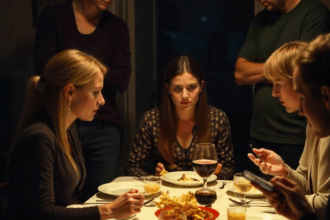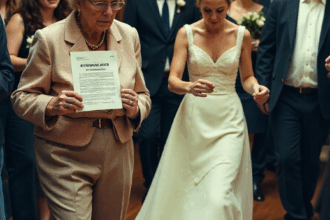“She’s not yours.” Mark’s whisper felt like ice. The room inhaled; the clock ticked loud. I watched my daughter’s face go grey—eyes wide, mouth forming a question she couldn’t voice. My years felt like stacked cards. That file, he said, had my name, my handwriting on court-stamped paper: a consent form, a hospital receipt, a letter from a social worker I remembered—the one who saved my child after the accident, the one who promised I could get her back. That promise had been a lie, or I had been a liar. I don’t remember signing anything. I remember holding a bundle, a warm weight, a scalp with hair like straw, and then sirens and cold metal. I remember the social worker’s kindness and the way my mother had squeezed my hand. I remember being too young to be trusted by the county. My daughter reached for my sleeve, and I realized she was no longer two; she had been six the day the papers were filed. My pulse was a drum. “Show us,” I said, voice small but steady. Mark put the folder on the table like a verdict. Photographs, stamped dates, initials—my initials—beneath words I had never imagined next to my name: relinquished, consent, transfer. My lips moved but no sound. Outside, a neighbor’s dog barked as if to say the world continued. My daughter asked, barely a whisper, “Did you?” Did I what? Did I sign away the only thing I loved to save her? Or had someone forged my signature to protect me from a different shame? The room held its breath; I didn’t want to let theirs steal mine. I stood, a small flame, and said, “Then we’ll go to the archive now.” My daughter nodded, fragile and fierce, and we gathered the folder together, breathing.





